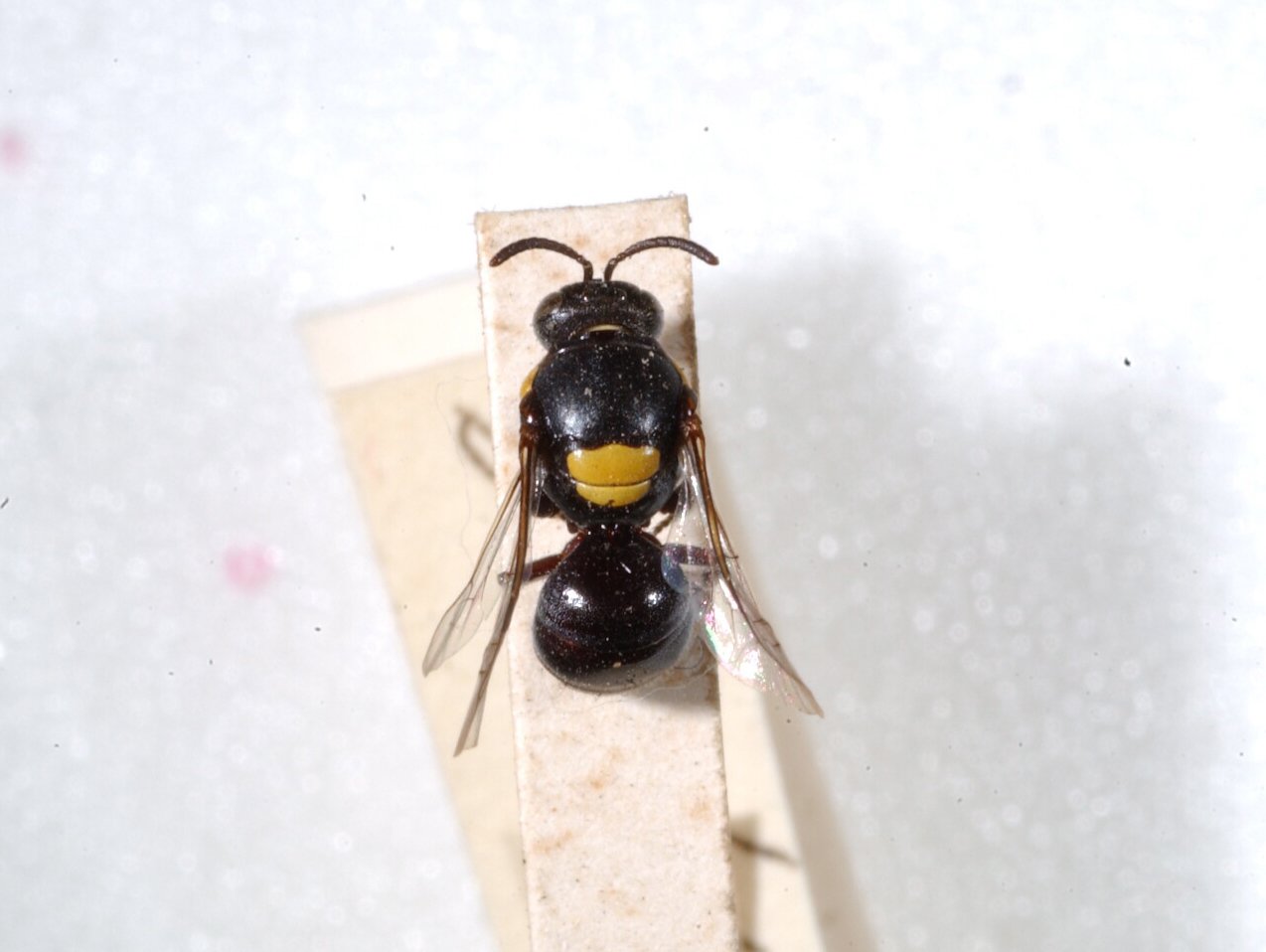Masked bees

© Australian Museum
Masked bees get their name from their distinctive yellow or white markings on their face.
Habitat
Masked bees live in urban areas, forests and woodlands, and heath. Many species nest in twigs, branches and reeds. As a group they are more abundant and diversified in Australia than anywhere else in the world, probably because of the variety of eucalypt trees available for pollen and nesting.
Distribution
Masked bees are found throughout Australia.
Feeding and diet
The female of one exceptional masked bee, Hylaeus bicolorellus, is known to use its specially adapted jaws to chew into flower buds before they open. This is, in effect, stealing the pollen because the flower has no opportunity to be pollinated. The bee was, until recently, thought to be rare and unusual
Other behaviours and adaptations
Hylaeus perhumilis is a common masked bee around Sydney. It occurs in large numbers around flowering eucalypt and Angophora trees. It is small (4 mm) with a mostly black, elongated body and has yellow areas on its face and legs.
Hylaeus nubilosus is another common masked bee that has a typical white masked face and a yellow patch on its back-another common feature of this group. It visits a range of native flowers.


